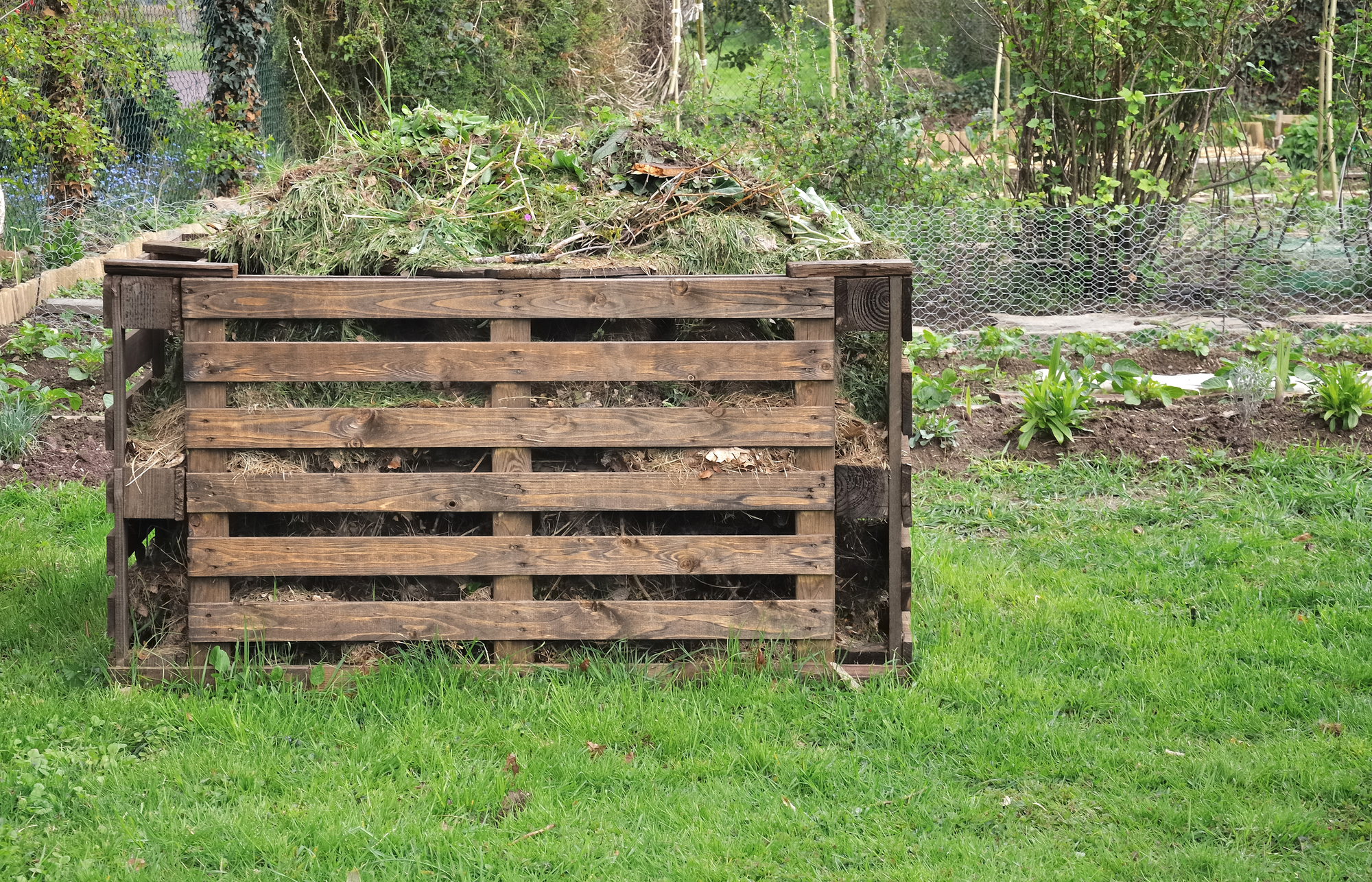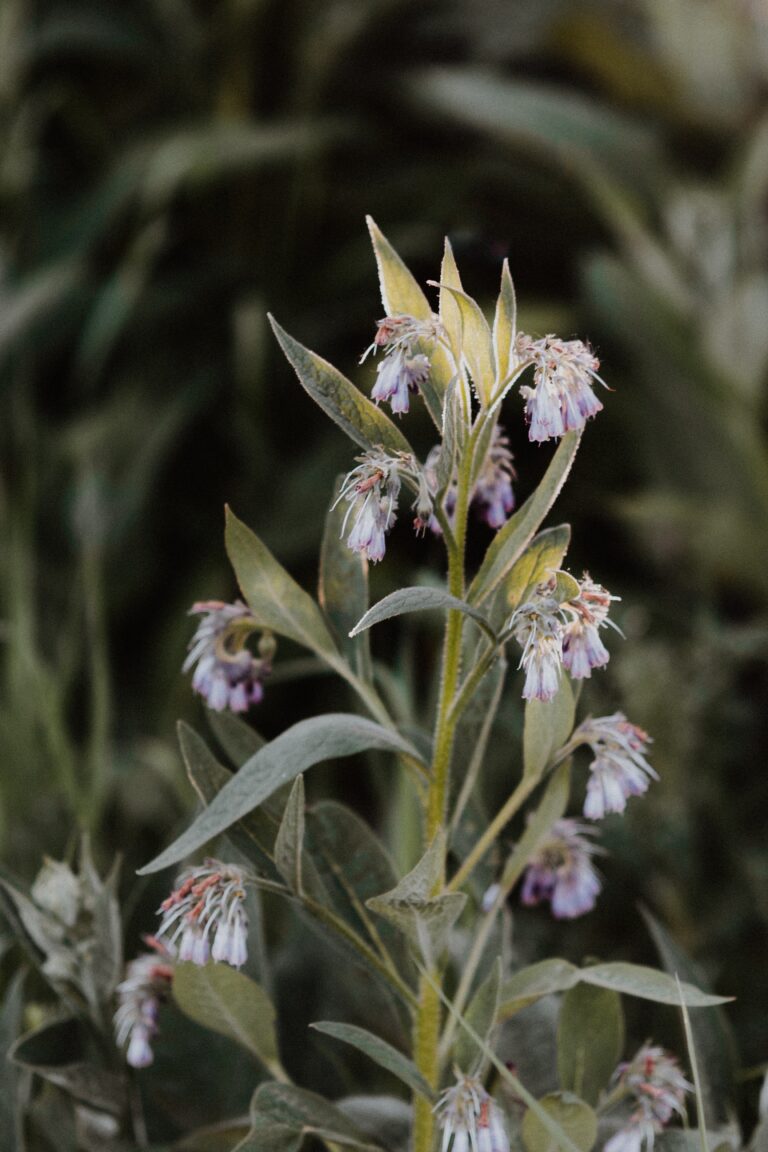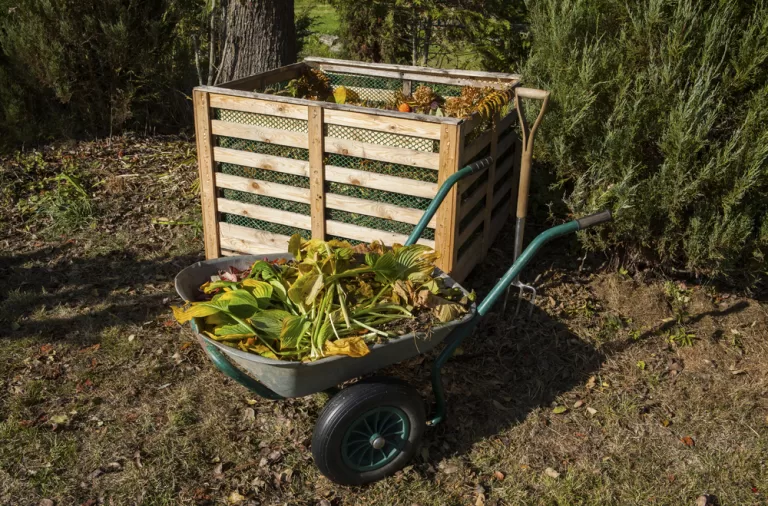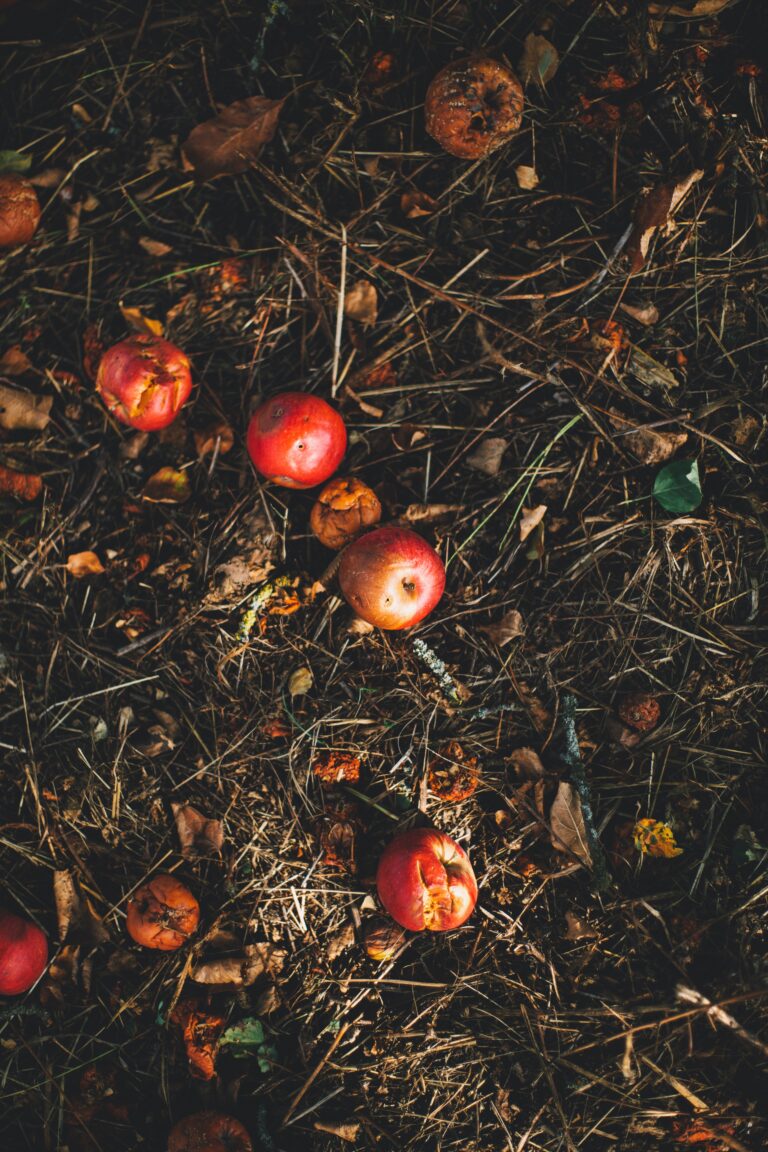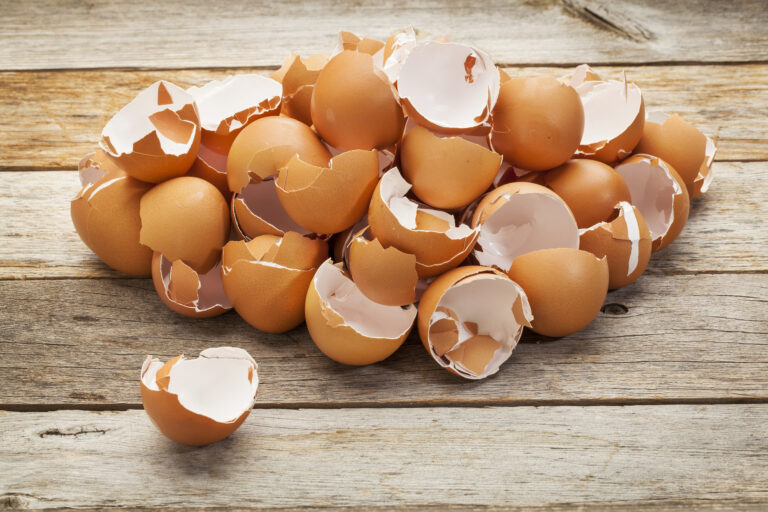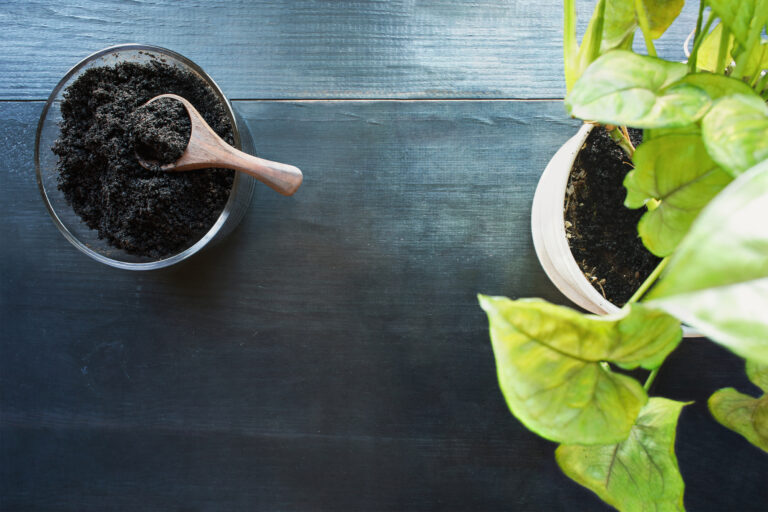Composting with Greens and Browns
As soon as I started gardening, I also started composting. It’s become a big part of my daily life. Sitting on my kitchen counter, next to my coffee-maker, is a silvery cannister in which I dump my kitchen scraps every day to contribute to my compost pile. Not just any kitchen scraps, though! More on that in a minute.
I also invested in a composting tumbler for my garden, and I dump my kitchen scraps into that tumbler on the regular.
Every organic gardener that I know composts. The virtues of it are many. It reduces waste in general because you’re recycling food, coffee grounds, coffee filters, newspapers and other junk that would just end up in a landfill. It is completely natural, and it is environmentally friendly. And your garden will love you for it.
Sold? Ready to get started? Let’s move on to the specifics and the science.
The basics of composting
Successful composting requires two different categories of material: Greens, and browns. It also requires the right mix of these materials.
The greens are nitrogen-rich and help to break down the brown materials. in your compost pile. Nitrogen speeds up the decomposition process.
The browns, made up of long-dead material, are rich in carbon, and they also add bulk and help allow air to circulate in the compost pile.
What can you use for greens in composting?
Some examples of greens that can be added to a compost pile include:
- Grass clippings
- Vegetable scraps
- Coffee grounds and filters
- Tea leaves
- Seaweed
- Manure (from herbivores only!)
I know, coffee grounds and manure are both brown in color, but for the purposes of your compost box, they’re green.
One way to incorporate composting into your daily routine is to buy a small composting cannister for your kitchen. You can purchase them at your local garden supply store or online, and they are designed to prevent any smells from escaping. Dump your fruit and vegetable scraps in the cannister instead of in the garbage. It’s best to chop up any fruit and vegetable scraps to small bits because then they will break down faster.
And when you mow your lawn – as long as you’re not using chemical fertilizers or pesticides on it – be sure to gather up those lawn clippings for your compost bin. Just stir up the grass so it doesn’t form a big mat which takes longer to break down.
What Can You Use For Browns In Composting?
Items you can use for your browns:
- Paper
- Newspaper
- Wood – only untreated, though! Branches, twigs, et cetera
- Sawdust (only from untreated wood)
- Hay
- Straw
- Pine needles
- Plant stalks
Your browns are dry, and full of tasty carbon just waiting to be broken down. Mixing branches and sticks throughout the compost helps the air circulate freely.
Never put these things in your compost!
Never put meat, citrus fruits, human or dog or cat waste, or diseased fruits and vegetables of any kind in your compost.
Citrus fruits are too acidic and can slow down or prevent composition.
Meat can contain e. coli, listeria and other pathogens, which can contaminate your compost and therefore your garden. It also will smell bad, and possibly attract wild animals to your compost. On top of that, using meat in your compost will likely attract maggots. Ick. Moving on quickly…
Using diseased fruits or vegetables in your compost may spread those diseases to the produce that you’re growing. Only put in healthy fruits and vegetables. Diseased fruits and vegetables should be removed from your garden and disposed of in the trash to keep them from spreading fungus, parasites, and whatever else is ailing them.
Human, dog and cat waste, and waste from meat-eating animals, contain diseases which will contaminate your produce.
Horse manure, cow manure, and chicken poop are all excellent for compost, because those animals are herbivores.
The Right Ratio of Greens to Browns
The success of your compost heap depends on getting the right ratio of green material to brown material. If you search the internet, or ask around, for the ideal ratio between greens and browns, you’ll come up with a variety of answers. You may see a recommendation of 1:1, you may see 2 to 1 or 3 to 1.
I personally have had success with 2:1, meaning two parts of greens to one part of browns. This ratio provides the ideal balance to heat up the compost pile to the necessary temperature for decomposition and helps to prevent unpleasant odors.
Layering your compost
Now you know what to put in your compost, and you are ready to start building your compost pile. The best technique for mixing your greens and browns is layering. It’s often referred to as the lasagna technique of composting.
You can use a composting box for this, whether it’s homemade or store-bought, or you can just make a big pile on the ground.
Start with a layer of browns, such as leaves or straw, at the bottom of the compost pile. Add a layer of greens, such as vegetable scraps or grass clippings, on top of the browns. Repeat this layering process until the pile is complete. Go about three feet high, and three feet wide.
Common Composting Mistakes and How To Avoid Them
Excessive Greens
One common mistake when using greens in compost is adding too many at once.
You want to start out with the right ratio from the beginning, and every time
you add greens to your compost, make sure you are adding the appropriate ratio of browns as
well.
Improper Mixing
Another mistake is not sufficiently mixing the greens and the
browns. Neglecting to mix the compost can result in pockets of airless
material, which can slow down the composting process and lead to unpleasant
odors. However, if you stir up your compost a few times a week that will help alleviate this problem.
Hot Mess: What To Do When Your Compost Isn’t Heating
Your compost pile should get nice, hot and steamy, to the point where you can feel the warmth emanating from it. If your compost pile is properly composed of the right mix of ingredients, it should rise to a temperature of around 150 to 165 degrees within 3 days to a week. If your compost doesn’t heat up, the materials won’t break down.
Rather than just guesstimating how hot the pile is, it’s helpful to use a compost thermometer. Follow the instructions of the composting thermometer to test the internal temperature of your compost pile.
Your thermometer may deliver the bad news that your pile has not reached the desired level of toastiness to will kill pathogens and break down the materials. So what gives? Why ISN’T your compost pile a hot mess?
One common issue is a lack of greens. If your pile is heavy on carbon-rich “brown” materials but light on “green” materials, it may not be able to generate enough heat to break down the organic matter.
You may need to increase the ratio of greens from 2 to 1, up to 3 to 1, if your compost pile is not heating up properly.
Next, Let’s Talk About Water and Air
In addition to the right balance of browns and greens, compost also requires proper moisture and aeration to heat up. The pile should be moist, but not soaking wet, to allow the microorganisms responsible for decomposition to thrive.
Putting your compost pile in the sun should ensure that it heats up, right? Well, not necessarily. If your pile is in direct sunlight it may dry out, which will interfere with the chemical processes needed to generate heat and break down matter. In that case, the compost pile will need to be watered several times a week.
Aeration is also important, as the microorganisms require oxygen to do their job. This can be achieved by turning the pile regularly with a pitchfork or aerator, or by using a compost tumbler. I love my tumbler!
Remember, composting is a science, but it’s also an art.
Your particular climate, and the materials that you are using, make your compost pile unique and it may take a little while to figure out the exact mix and techniques that you need in order to get your compost pile to the proper temperature.
Now, Let’s Talk About Insulation
Another reason for a lukewarm compost pile is poor insulation. If the pile is not properly insulated, it won’t retain enough heat. Here are a few factors that can affect insulation:
- Too much moisture: Yes, if your pile is too dry it won’t compost properly. However, it’s all about balance. If your compost pile is too wet, that can cause it to cool down quickly. Try adding more dry materials like leaves or straw to balance out the moisture levels.
- Not enough brown materials: Brown materials provide insulation and help to retain heat. If your ratio is off and your pile is mostly green materials, it may not be sufficiently insulated.
- Pile size: Too small of a compost pile may not provide enough insulation. Try building up your pile more. Three feet by three feet wide, and three feet high, is a good rule of thumb for a compost pile that is large enough to generate the necessary heat, but not too big to handle, and not so big that it gets compacted.
The Critter Factor
Another factor that can affect the temperature of your compost pile is critters. While some critters like worms and insects are beneficial, and will help break down the organic matter, others can cool down the pile.
- Birds: Birds can dig into the pile and create air pockets. Try covering your pile with a tarp or netting to keep birds out. The tarp will also help to trap heat. You may need bricks or stones on the edges of the tarp to help prevent the tarp from blowing away.
- Large animals: If you have large animals like raccoons or bears in your area, they may be attracted to the smell of your compost pile. Make sure your pile is securely enclosed to keep these animals out.
- Rodents: Rodents like rats and mice can dig into the pile and create air pockets, which can cool down the pile. Make sure your pile is securely enclosed to keep rodents out, and again, aerate and turn your pile regularly to break up any nests and chase the critters out. Sorry, critters, there are plenty of other places for you to nest.
Natural Heat Boosters
Adding manure to your pile can help heat things up in a hurry. Manure is high in nitrogen and which can help jumpstart the decomposition process. You’ll want to use fully composted manure to avoid introducing weed seeds or pathogens into your compost.
Another natural heat booster is to add coffee grounds to your compost. Coffee grounds are high in nitrogen and can help to increase the temperature of your pile. Plus, they’re a great way to repurpose a waste product and give your compost a little extra kick.
Seasonal Adjustments
The temperature of your compost pile will also be affected by the weather and by the season. During the hot summer months, your pile may heat up quickly and require more frequent turning to prevent it from overheating and drying out. In the colder winter months, your pile may slow down and require additional insulation to keep it warm.
To prevent this from happening, consider adjusting your compost pile based on the season. During the summer months, try adding more brown material to your pile to help absorb excess moisture and prevent overheating. Water as necessary. During the winter months, you can add insulation such as straw or leaves to help keep your pile warm.
Composting does take some fine-tuning, but the rewards of saving money on fertilizer, and of being kind to the environment, make it well worth it. Get started today, and within a few months, if all goes well, you will be rewarded with a rich, dark pile of plant food that you created yourself – and, a bountiful harvest at the end of the growing season.

